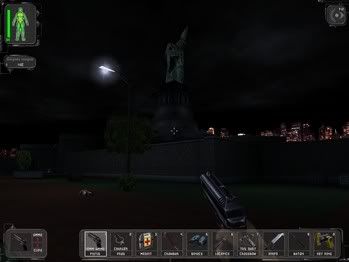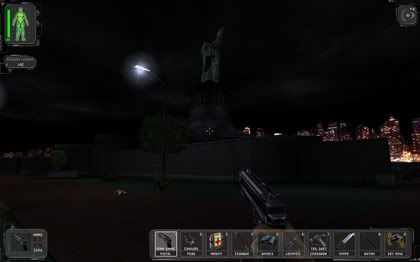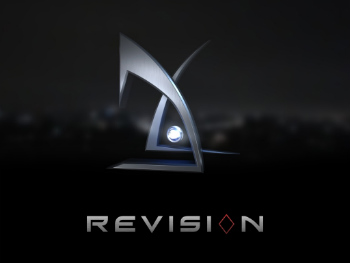Destroyerzero wrote:I like having 16 : 10 in games and use such resolutions, but I realized the dark side of LCD monitors a long time ago. While the 16 : 10 is very nice in games.....its very bad in FPS Multiplayer games.
Here is why.
1) LCDs have a backlight which means that it becomes an impossibility to render dark colors perfectly and correctly. One can never render a true BLACK on an LCD. The low bandwith as well of an LCD causes colors to be washed out.
There's no thing like "low bandwidth" of LCDs. I think you're talking about saturation, which would be the correct term.
Or are you talking about Color primaries of LCDs that differ from the NTSC standard primaries used by CRTs?
High gamut LCDs use the AdobeRGB standard that is very similar to NTSC. NTSC has worse (less saturated or less colorful) blues and purples but slightly better (higher saturated) reds.
The color primaries of high quality LCDs are excellent and the color gamuts are comparable nowadays and even better in the greens, purples and blues. The perceived contrast of LCDs is higher than of CRTs, that's been investigated several times and there are several papers about color, contrast, black level/dynamics perception of LCDs compared to CRTs. CRTs don't produce real blacks either.
Destroyerzero wrote:2) Refresh Rate and Response time...
The response time in an online game must be multiplied by the refresh rate. A lot of LCD monitors out there claim to have a 2 - 5ms response time, but that is really G2G (gray to gray) which is a small range. Everything else deals with 12 - 16ms response time. There are some monitors that can do 8ms response time, or so they claim. I own an LCD and know its only good for RPGs and RTS.
If your game is updating at 16ms, then 60hz x 16ms = 960ms...per refresh going...Enough for any player in an FPS game to be headshot or killed during the refresh by a good player.
If the refresh rate is 60 Hz then there's 1000/60 ms = 16.6667 ms per refresh going.

Hmm, that's exactly the response time. Believe me, that's not a coincidence

If you had a refresh time of 960 ms then you couldn't see a thing on an LCD.
1. Either the signal from the video card would send 60 images/s to the monitor but the monitor would react awfully slow. The result would be some king of flat greyish or even almost white image.
2. Or you would have only 1000/960= 1.042 images per second . That's also unplayable.
Destroyerzero wrote:3) Advanced Mouses and Keyboard
Due to the monitor being slow, any advantage you get from mice with extreme response times as well as keyboards with extreme response times...go down the drain. Any high precision timing is lost due to your LCD's slow response rate.
CRT response rate is 10 - 100 times faster than LCDs, so you can take advantage of all your equipment and have it rendered in realtime with actual color correction and 32 bit color instead of 24 bit LCDs that have problems rendering. LCDs are great for work monitors though.
The normal and occasional gamer doesn't feel the difference. If you're one of these hardcore gamers then you shouldn't buy a high level LCD.
I've always beaten my friends on LAN-parties in UT2004, BF2 etc. although my monitor's response time is 16 ms and has a 1-frame mouse lag)
For gamers any kind of cheap and fast monitor does the job better. Color fidelity, color constancy, big gamuts etc. are absolutely unimportant for gaming. As 99.99 % of all gamers don't calibrate their monitors (most people don't even know what that is) it's nonsense to talk about good colors. An uncalibrated CRT isn't better than an uncalibrated LCD.
Color metrics wise a big gamut has nothing (not primarily) to do with high quality color reproduction, but a full color profile (like ICC) does.
People who need response times below 1 ms and 4000 dpi mouse resolution don't give a f**k about colorimetrically correct colors.
You're talking about 24 bit vs 32 bit. I hope you know that 32 bit actually means 24 bit RGB (8 bit for each color) plus 8 bit alpha channel (used to process transparency).
Don't mix the maximum amount of colors that can be rendered by a monitor with the number of colors that are used in the internal processing of the OS/game rendering engine/video card.
Let's take for example one of those LCDs that you find so bad:
EIZO CG222:
Internal color processing: 16 bit for each color channel, thus 48 bits.
Displayable colors: 12 bit look-up table per channel, thus 36 bit true color rendering.
This means that this LCD can display 16 times more colors than your 32 bit CRT.
Most consumer-level LCDs have lower color depths. The very cheap ones have even below standard color depths, a flaw that is circumvented by internal color dithering algorithms.
Destroyerzero wrote:
There are 2 solutions to this problem
1) Run a CRT capable of very high resolution and play 16 : 10 in a window
or
2) Buy a Sony GDM-FW900 (Its a CRT monitor that is capable of 23xx x 1440 resolution which is a Widescreen monitor with ACS 4 : 3 scaling and support. The monitor was discontinued long ago, but this $2300 monitor can be found in Ebay for $250 + shipping. Its around 100 for shipping in the US, but well worth it. You get the widescreen resolution and have the advantage of a CRT Response times in a widescreen format.
Solution 1: Learn mathematics.
Solution 2: Learn something about color theory and color metrics before talking about such a complex matter.
Solution 3: Don't think because the topic is active on Youtube the arguments are written by people who know their stuff. It's Youtube, man!
Solution 4: If you don't know what you're talking about - just don't talk.
Solution 6: You get the widescreen resolution and have the advantage of 40 kg pure CRT, which also degrades over time, can have convergence problem, geometric image inaccuracies, color shifts, mustn't stand near magnetic fields because that negatively influences the slit mask and uses much more electric energy (which is the best advantage - ecologically speaking).
And last but not least: Please don't feel too offended, but sometimes silence IS golden.
al'be:do








